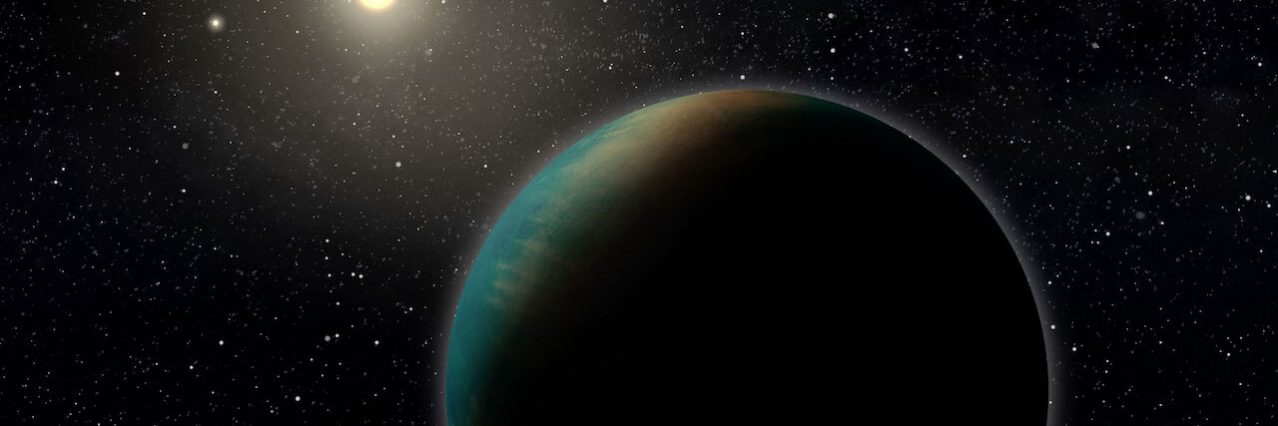Artist’s rendering of a super-Earth-type exoplanet, TOI 1452 b, as it might look if the planet were an “ocean world” – one of the possibilities suggested in a new study. Source: Benoit Gougeon, Université de Montréal.
A team of astronomers have come across an exoplanet that they say is almost identical to Earth with experts believing there are billions more out there.
In August, NASA and a team of researchers led by the University of Montreal detailed their discovery of an exoplanet called TOI-1452 b and have since dubbed it a “super-Earth”.
The planet lies some 100 light-years away and orbits a red-dwarf star with scientists estimating that it’s 70 per cent larger than Earth and could possibly contain a deep ocean.
PhD Student and lead researcher of the project Charles Cadieux said that the exoplanet might be a “water world”.
“TOI-1452 b is one of the best candidates for an ocean planet that we have found to date. Its radius and mass suggest a much lower density than what one would expect for a planet that is basically made up of metal and rock, like Earth.”
It’s believed the TOI-1452 b makes a complete orbit of its star in 11 days- which is equivalent to a “year” on the planet says NASA who also says the James Webb Space Telescope (JWST) would be perfectly positioned to make some scientific observations.
Despite this discovery, which was made by NASA’s Transiting Exoplanet Survey Satellite (TESS), researchers believe there are billions more planets just like TOI-1452 b.

Professor of Astronomy at the University of Arizona Chris Impey posted an article on The Conversation in which he discussed what planet would be most hospitable for life.
“The most habitable planet would have roughly twice the mass of the Earth and be between 20% and 30% larger by volume.
“It would also have oceans that are shallow enough for light to stimulate life all the way to the seafloor and an average temperature of 77 degrees Fahrenheit (25 degrees Celsius).
“It would have an atmosphere thicker than the Earth’s that would act as an insulating blanket.
“Finally, such a planet would orbit a star older than the Sun to give life longer to develop, and it would have a strong magnetic field that protects against cosmic radiation.”
He says that super-Earth’s, from what scientists know, fit this description pretty well and that there are two exoplanets out there that may even be more habitable than Earth.





